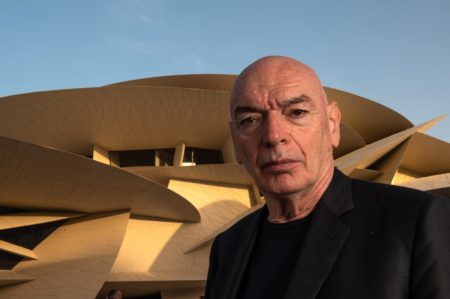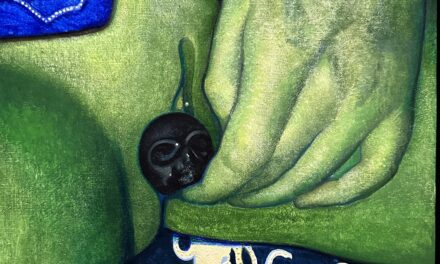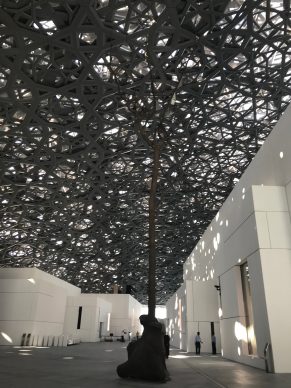Romanticism
Artists can have a kind of 21st-century romanticism, if we can call it that, which means that some of them aren’t satisfied with recognition. They’ll call into question all the signs that bring them value and credibility a hundred times over.
Many artists lives
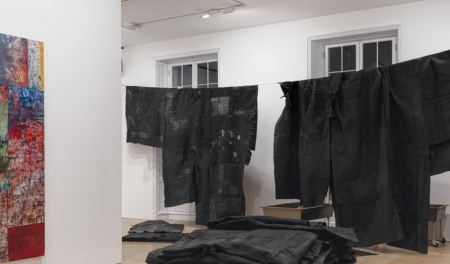
Oscar Murillo can be classed as part of this ultimately rare category. He’s only 35 but he’s already lived many artistic lives.
Turner Prize
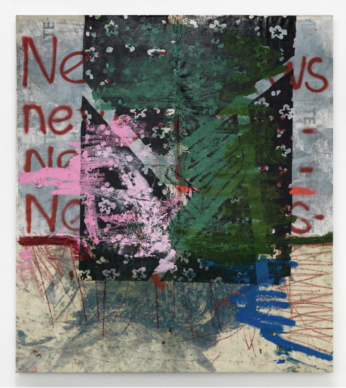
There’s been a lot of talk about him in recent years, especially in Britain, because when he was nominated for the Turner Prize in late 2019 he and the three other nominees (Lawrence Abu Hamdan, Helen Cammock and Tai Shani) decided to share the prize between them (See here the report about it). This decision was accompanied by a statement that foreshadowed the chaos brought about by the public health crisis: “We are honoured to be supporting this bold statement of solidarity and collaboration in these divided times. This symbolic act reflects the political and social poetics that we admire and value in their work.”
Speculation

In another direction entirely, in 2013 and in the years afterwards Murillo was first being talked about in the context of the art market. He was the subject of major speculation and had just joined the roster at Zwirner, one of the most powerful galleries in the world. As a general rule it’s never good to be known for the money one represents when starting out in the global arena of contemporary art. He succeeded in overcoming this image.
Proustian madeleine production line
So in 2014, at his first exhibition at his gallery in Chelsea, New York, instead of presenting highly commercial pieces, paintings to hang on the walls of the super-affluent Manhattan elite, he conceived a real-life mini chocolate factory based on the one in La Paila, Colombia, the village where he was born. (Oscar moved to London when he was still a child during the 1990s). It was like a kind of Proustian madeleine production line on an XXL scale. In a figurative sense, when people might have been tempted to categorize him as an “artist who’s primarily interested in money”, he showcased an unsellable object, a factory for another kind of treasure commonly known as chocolate.
Venice Biennale 2015
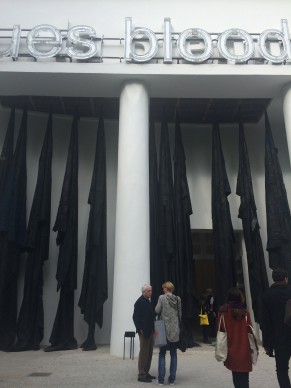
Since then many things have happened and he has taken part in numerous institutional exhibitions, including the Venice Biennale in 2015. That year, the now legendary Nigerian-American curator Okwui Enwezor (1963-2019) chose Murillo to display his work at the entrance to the most visited pavilion in the show, the international pavilion. The artist hung huge black canvases composed of disparate abstract fragments, suspended like simple strips of fabric.
Destroying his passport

Crazy as it seems, Oscar Murillo also decided to destroy his British passport while he was on a plane in order to put himself in the uncomfortable shoes of migrants and others forgotten by the world ( See here the report about it). Furthermore, since 2013 he has been developing a project in collaboration with students aged between 10 and 16 in thirty countries. His organization, the Frequencies Foundation, archives and also periodically recycles a multitude of spontaneous designs produced by these young people, on canvases which are sent to schools.
Social detonator

At the height of the health crisis the La Paila native even turned his Colombian studio, 35 minutes from Bogota, into a site for food distribution ( See here the report about it). As one New York Times journalist described him in a profile from December 2021, Oscar Murillo is a “social detonator”.
Abstract canvases

That said, in creative terms the main mark he has left at 35 years old is that of an artist known for his abstract canvases composed of repeated traces of different materials and bursts of contrasting colours which are immediately recognizable. He plays with various techniques, arranged in layers. We can see in his output the heritage of the abstract works by the great German artist Sigmar Polke (1941-2010) (See here a report about Sigmar Polke).
Bogota, Rome, Tokyo
In 2021 he was the subject of exhibitions at the art museum at Colombia’s National University, at the Memmo Foundation in Rome, and the Mori Art Museum in Tokyo, and he was part of the show that attracted lots of visitors in London at Hayward Gallery dedicated to English contemporary painting: “Mixing It Up: Painting Today”.
The Hague

But it’s at his exhibition in The Hague in Holland at KM21 where you can discover his new work on show until 18 April, a series of paintings inspired by Claude Monet’s Waterlilies.
Inspired by Monet

“I’ve always been interested in a kind of purity of aesthetics, colour: beauty,” he reveals. “But I didn’t allow myself to do that. I found that my soul wasn’t drawn in that direction. Then I saw a very beautiful Monet show in The Hague and I was given his biography, which I read. I understood how he struggled because of his cataracts to produce close to 250 works. Now the entire world loves all his paintings. The story became interesting: he overcame a problem.”
Push boundaries
Today Oscar Murillo is therefore presenting, on the one hand, an almost classical body of work of abstract paintings, and on the other hand demonstrating an absolute desire to push boundaries through actions that are more society orientated. “I am a migrant. I am from a working class background. I’m not interested in promoting the ego. My paintings are not in contradiction with my principles. They become a way of infiltrating other worlds,” he concludes.
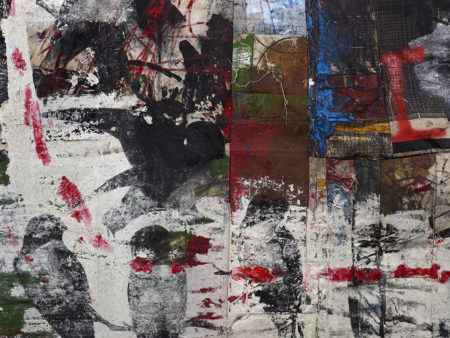
http://frequenciesproject.net/
Support independent news on art.
Your contribution : Make a monthly commitment to support JB Reports or a one off contribution as and when you feel like it. Choose the option that suits you best.
Need to cancel a recurring donation? Please go here.
The donation is considered to be a subscription for a fee set by the donor and for a duration also set by the donor.

